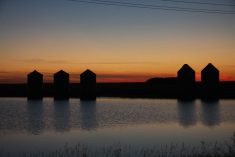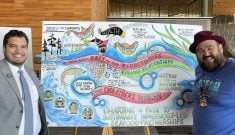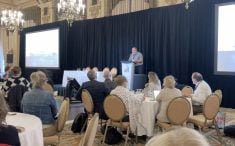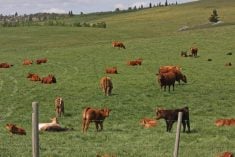The students in the Big River, Sask., high school didn’t like the idea
of their parents coming to school with them.
But seven months into the community school concept, most appreciate it,
said Gerry Guillet, director of education for the Parkland School
Division. He was explaining to a conference of school trustees,
teachers and principals March 12 how the community school works in a
rural setting.
Until last fall, all of Saskatchewan’s 37 designated community schools
were in poorer, inner city areas of Saskatoon and Regina. This school
Read Also

Know what costs are involved in keeping crops in the bin
When you’re looking at full bins and rising calf prices, the human reflex is to hold on and hope for more. That’s not a plan. It’s a bet. Storage has a price tag.
year the province allowed another 42 of the specially funded schools to
test the waters in rural and northern Saskatchewan. After hearing
Guillet’s presentation, one person in the audience asked why all
schools aren’t set up this way.
“Without a school, the trend is that the centre of a rural community is
the senior citizens centre,” said Guillet.
He said all schools start with the idea that the student is the centre
of all activity. A community school adds the involvement of family,
community and government services such as health and justice to form “a
network of adults to support students’ learning.”
For example, to set up a nutrition program, the school found volunteers
who would cook and distribute the snacks to students. That meant seeing
parents, seniors and business owners in new roles in the school.
Getting farmers to volunteer is a special problem because of their busy
times and the prevalence of off-farm work.
“We have to be open to that and call when they are free,” said Guillet.
“The volunteer nature of rural Saskatchewan far surpasses urban
volunteerism. Rural Saskatchewan has very open arms.”
Another barrier to the community school concept is that rural children
must take the bus home so they cannot get involved in after-school or
evening activities. But Canwood school, the other community school in
the division, deals with that in two ways, said program co-ordinator
Linda Demers. Either more activities are held at noon or else she
arranges rides for some kids.
Demers and fellow co-ordinator Dawn Deets in Big River said their work
includes publishing newsletters that report local community news as
well as school happenings, arranging courses for adults to use school
facilities at night, setting up “adoptive grandparent matches” and
finding student or adult volunteers to visit nursing homes, help with
gym night, or tutor and mentor students. The co-ordinators also relieve
the teachers of time-consuming details like arranging transport for
sports and other events.
The education department provides special funding to allow community
schools to hire co-ordinators and keep the system working.
“We’re using the school. It’s not just sitting empty,” said Deets.
While there are social advantages to having an RCMP officer read to the
Grade 1 class, Demers said community schools require more work, more
money and are susceptible to volunteer burnout.
Guillet said with more than 100 programs in his division’s two
experiments with community schools, “maybe we tried too much in the
first year.” He will get that answer soon from an evaluation survey
being sent to students, parents, school staff and local residents.














